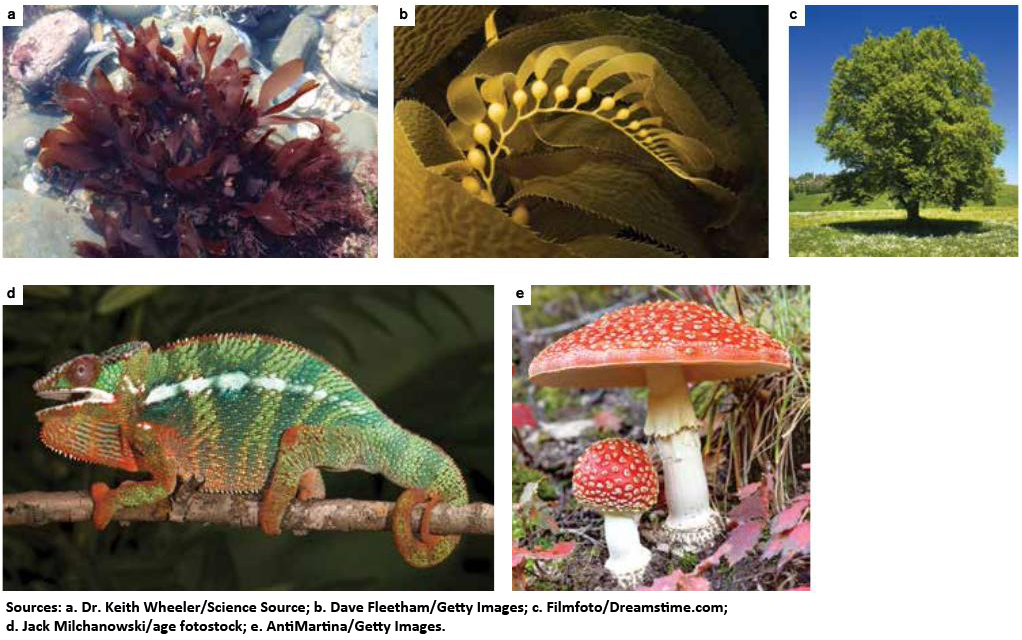Complex multicellularity evolved several times.
Complex multicellular organisms are conspicuous parts of our daily existence. Plants, animals, and, if you look a little more closely, mushrooms and complex seaweeds are what we notice when we view a landscape or the coastal ocean (Fig. 28.3). Complex multicellular organisms differ from one another in many ways, but they share three general features. They have highly developed molecular mechanisms for adhesion between cells. They display specialized structures that allow cells to communicate with one another. And they display complex patterns of cellular and tissue differentiation, guided by networks of regulatory genes. Without these features, complex multicellularity would be impossible.

For example, plants and animals both have differentiated cells and tissues with specialized functions. Only some tissues photosynthesize or absorb organic molecules; other tissues transport food and oxygen through the body; and still others generate the molecular signals that govern development. Only a small subset of all cells contributes to reproduction. Because of this functional differentiation, cell or tissue loss can be lethal for the entire organism.
580
There is one more feature of complex multicellular organisms that is key to understanding their biology: They have a three-
Complex multicellularity evolved at least six separate times in different eukaryotic groups (Fig. 28.4). Complex multicellularity characterizes animals, but it also evolved at least twice in the fungi, once in the green algal group that gave rise to land plants, once in the red algae, and once in the brown algae, producing the giant kelps that form forests in the sea.

Quick Check 1 How do simple multicellular organisms differ from complex multicellular organisms?
Quick Check 1 Answer
Complex multicellular organisms have differentiated cells and tissues. Moreover, in simple multicellular organisms, all or nearly all cells are in direct contact with the environment. In complex multicellular organisms, most cells are completely surrounded by other cells.